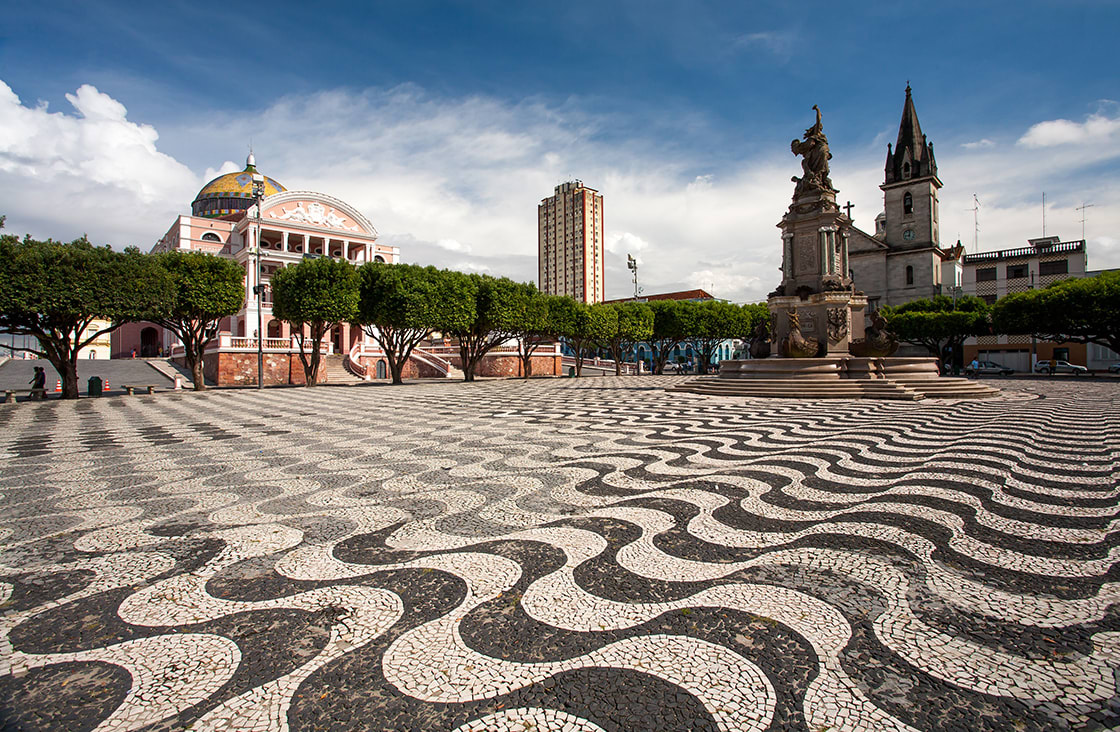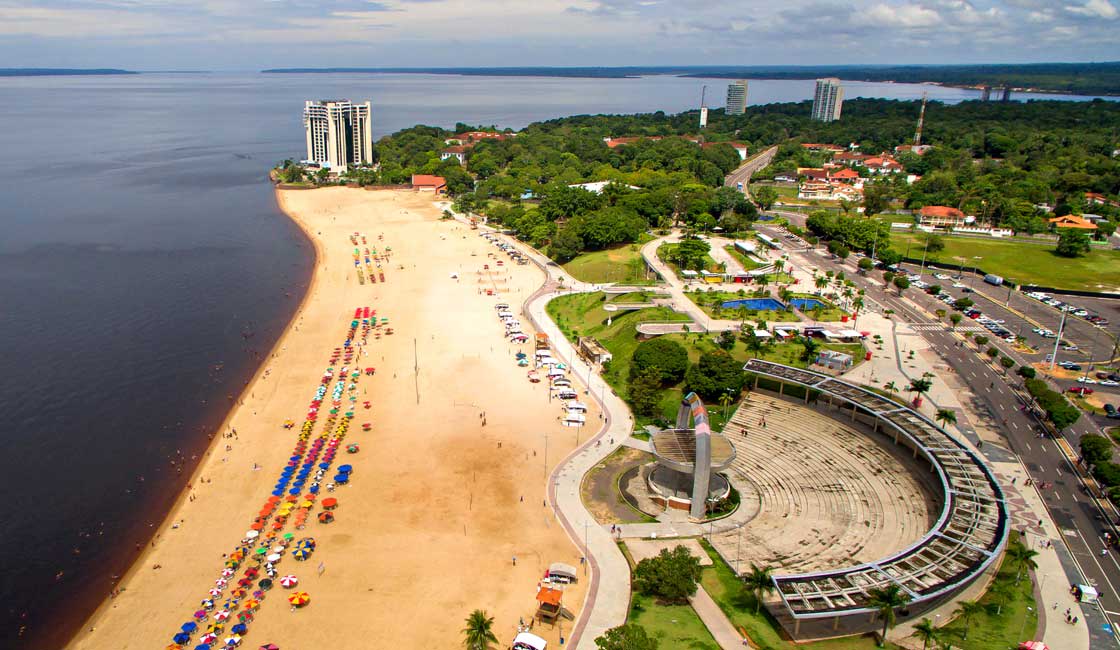
Manaus, in the heart of the Brazilian Amazon, is a great city from which you can explore the Amazon Rainforest, the biggest tropical forest on Earth. Understanding the Manaus climate may help you to decide when the best time of year to visit Manaus is for you, dependent upon your preferences. Every time of year offers something extraordinary for visitors to the Brazilian Amazon, and whether you prefer hiking or canoeing, cruising or staying in luxury hotels or jungle lodges, our helpful guide to the best time to visit Manaus is here:
It’s fair to say all of the seasons in this region are hot and humid, so be prepared for this climate. Because of Manaus’ proximity to the equator, the seasons are difficult to distinguish temperature-wise but can be separated into wet and dry seasons. The dry season usually runs from June to October, and the wet season from December through to May, while the rest of the months are generally hot and humid.
The warmest months are September and October, with an average temperature of 33°C, and the coldest month is February, with the average temperature dipping to 30°C. As you can see, the temperature really doesn’t vary much at all throughout the year. In fact, the temperature difference between day and night is actually bigger than the difference in temperature between the seasons.

Beach in Manaus at the riverbank
Manaus is located close to the Amazon River Basin and the Amazon Rainforest, so has a primarily wet tropical climate or equatorial climate, also known as a tropical monsoon climate. It is surrounded by water, and has a beautiful harbor, making it a perfect place to catch your Amazon cruise. While it has two seasons, as mentioned above, aside from the rain the temperature fluctuates very little. Manaus’ main river, the Rio Negro, is the largest blackwater river in the world, as well as being the largest tributary of the Amazon, and can flood when there is a lot of rain in the region.
Interestingly, Manaus doesn’t get as hot as other parts of Brazil, like Rio for instance that can reach 40°C, Manaus never gets much over 33°C. Manaus receives a lot more rain that the Eastern section of the Amazon, so be prepared for rain even if you are travelling in the dry season. In Manaus, you need to be prepared for all eventualities, so be sure to pack appropriate light and breathable clothing as well as waterproof garments.
From November/December through to May, Manaus has its “rainy” or wet season, during these months the water can rise to up to 20 metres, and flooding is common. Most of the rain during this season occurs during the afternoon, but when it rains, it really rains! Within minutes the ground can be filled with water of up to 10 cm high, although the downpours usually only last around 30 minutes. The best month to travel to Manaus is June – just when the rainy season has finished. This is the month when the Amazon has benefited from all of the rain and so looks at its best, and the rain will be coming to an end so you won’t have to travel in the wet. The wettest months are March and April.
From February/March up until July/August, the water level is at its highest in the Amazon rainforest – and this actually allows you to access areas via canoe that are inaccessible throughout the rest of the year. During the rainy season, unique plants, flowers, and fruit-eating creatures can be seen in the Amazon. At this time some animals will switch diets, move into inland pools, and wading birds will migrate to the upper waters of tributaries. You will also notice at the beginning of the rainy season there are a lot more insects, as this is when they are reproducing.
The dry season can be a nice time to visit the Brazilian Amazon, the season usually starts in June and finishes around October. In this period, the average rainfall can be around 38 cm per month.
The driest months are July, August and September. If you prefer hiking through the forest, between July/August to February/March is when the water level is at its lowest, making it the best time for hiking. During this season you can also see a lot more wildlife, as there is less water for the creatures to hide in, including monkeys, cats, iguanas, and lots of types of lizards.
The bottom line is, both the wet and dry seasons are the best time of year to visit Manaus. Although the seasons can offer different jungle activities and weather conditions, at the end of the day, you’ll be fascinated by the Amazon’s wonders either way. Find a time that works best with your schedule as you start planning for your Amazon cruise out of Manaus, and the Brazilian Amazon rainforest will do the rest.
While Rainforest Cruises aim to provide accurate and up-to-date information, we make no representations as to the accuracy or completeness of any information herein or found by following any link on this site. Rainforest Cruises cannot and will not accept responsibility for any omissions or inaccuracies, or for any consequences arising therefrom, including any losses, injuries, or damages resulting from the display or use of this information.




